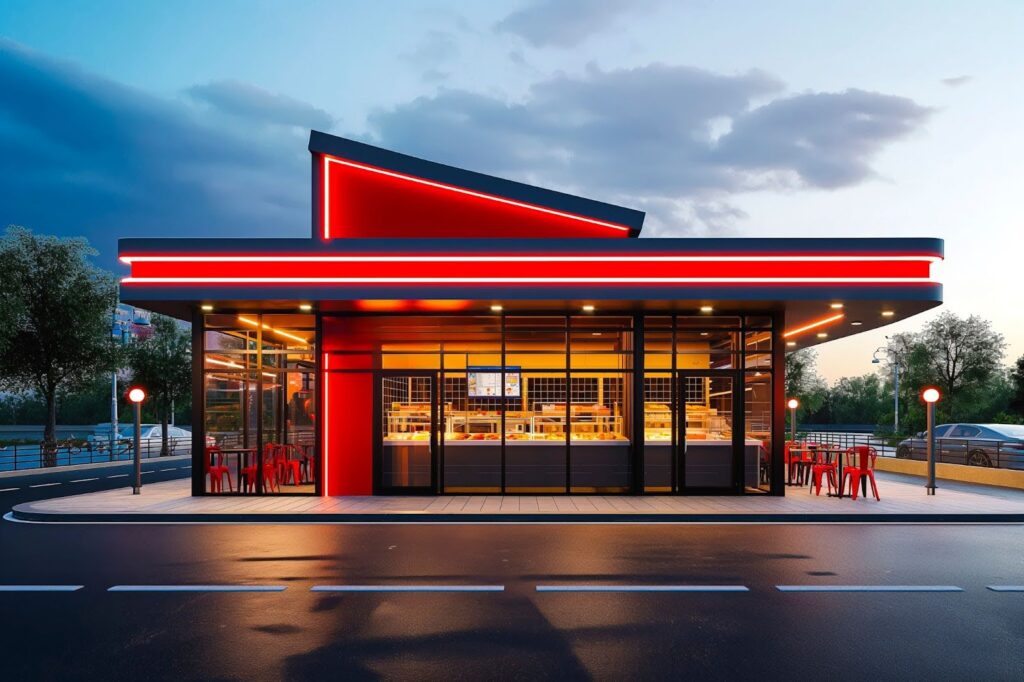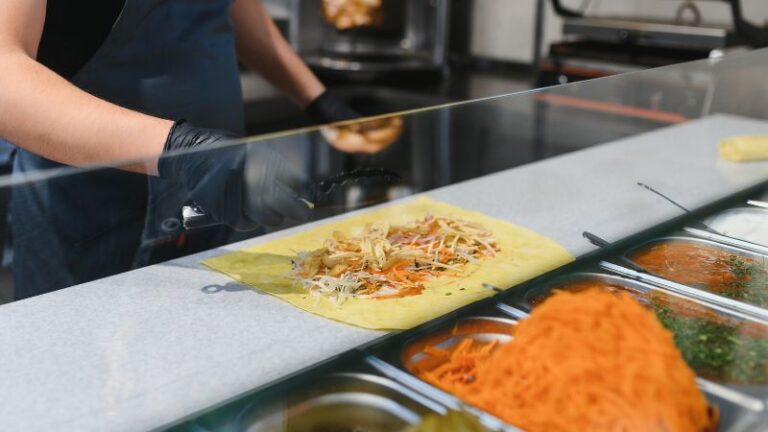Your Options for Financing Restaurant Expansion

If you own a restaurant, there’s a good chance you’ve thought about expansion.
Maybe you have lines out the door every weekend. Maybe your catering requests have doubled in the past year.
Or maybe you’ve spotted the perfect vacant spot across town that could bring in a whole new customer base.
The opportunity is exciting. But the financial side?
That’s where most owners hit a wall.
Expansion means more than just covering rent and build-out costs. It’s an upfront investment in permits, design, equipment, staffing, marketing, and the working capital to keep the new location running until it turns a profit.
Before you sign a lease or start negotiating with contractors, you need a financing plan that fits your goals, your cash flow, and your tolerance for risk.
Here’s what to know about the most common options for financing restaurant expansions and how to choose the right one for your business.
#1 Bank or SBA Term Loans
A bank term loan or SBA loan is often the first option owners consider. These loans provide a lump sum that you repay over a set period, usually at a fixed interest rate.
SBA loans, in particular, are attractive because they are partially guaranteed by the Small Business Administration, which allows banks to offer lower interest rates and longer repayment terms.
When it works well:
- You have strong credit and financial history (this includes your personal credit score!)
- You can show several years of profitability
- You have collateral to secure the loan
Advantages:
- Predictable monthly payments make cash flow planning easier
- Longer repayment terms reduce monthly burden
- SBA loans can be used for almost any business expense related to expansion
Things to consider:
- The application process is lengthy and requires detailed documentation, including business plans, tax returns, and financial statements
- You may need to personally guarantee the loan, putting personal assets at risk
- Funding can take 60–90 days
#2 Business Line of Credit
A business line of credit works more like a credit card. The lender approves a maximum amount, and you can draw from it whenever you need cash. You only pay interest on the amount you actually use.
When it works well:
- You have ongoing expenses rather than one large cost
- You want flexibility to cover seasonal dips, unexpected repairs, or marketing pushes
- You want quick access to cash without reapplying for a loan
Advantages:
- Interest only accrues on funds used, not the entire credit limit
- Can be reused as you pay it down
- Faster approval than traditional loans
Things to consider:
- Interest rates are often higher than term loans
- Credit limits may not be large enough for major build-outs
- Lines of credit are often reviewed annually and can be reduced or closed if your financial situation changes
#3 Equipment Financing
If your expansion plans involve upgrading or purchasing new equipment – ovens, refrigerators, fryers, POS systems – equipment financing can be a good fit. The equipment itself serves as collateral for the loan.
When it works well:
- A large portion of your budget is going toward equipment purchases
- You want to preserve cash for other expenses like payroll and marketing
Advantages:
- Faster approval process than traditional loans
- No need to tie up other business or personal assets
- Payments can be structured over the useful life of the equipment
Things to consider:
- Only covers equipment, not renovations or leasehold improvements
- Rates can vary depending on the lender and your credit profile
- You may pay more over time than buying the equipment outright
#4 Merchant Cash Advances and Revenue-Based Financing
Merchant cash advances (MCAs) and revenue-based financing offer quick access to cash in exchange for a percentage of your daily credit card sales or monthly revenue.
When it works well:
- You need funds in days, not weeks
- You have strong and consistent sales volume
- You are comfortable with fluctuating payments that match your revenue
Advantages:
- Very fast approval and funding
- Payments adjust with your sales volume, so slower months mean smaller payments
- No fixed repayment schedule
Things to consider:
- These are among the most expensive financing options, with effective APRs sometimes exceeding 50–100 percent
- Daily or weekly repayment can put a strain on cash flow
- Because costs are high, these should be used for short-term needs, not long-term financing
#5 Investors or Crowdfunding
Bringing in outside capital can be a way to expand without taking on debt. Investors may be individuals, groups, or even loyal customers through a crowdfunding campaign.
When it works well:
- You have a strong brand, loyal customer base, or unique concept
- You are open to sharing ownership or profits
- You can create a compelling pitch to attract backers
Advantages:
- No monthly debt payments
- Potential to build community buzz before opening
- Can bring strategic partners with experience and connections
Things to consider:
- You give up some control or equity in your business
- Crowdfunding requires significant marketing effort and often incentives like discounts or VIP experiences
- Investor agreements must be carefully structured to avoid conflicts later
#6 InKind and Creative Financing Options
InKind offers funding in exchange for food and beverage credits, which are then sold to customers. This aligns the lender’s success with your success because they want you to thrive so customers redeem their credits.
When it works well:
- You have strong margins and steady customer traffic
- You want to avoid interest and giving up equity
- You can fulfill credit redemptions without hurting profitability
Advantages:
- No interest or equity required
- Payments are made in the form of goods and services, not cash
- Lender is incentivized to support your long-term success
Things to consider:
- Works best for restaurants with high customer volume and strong repeat business
- Availability may be limited depending on your location
Preparing for Financing
Before you approach any lender or investor, preparation is key. Expansions often move quickly once the right space becomes available, so having everything in order now means you can act when the opportunity comes up.
- Build a detailed budget. Include build-out costs, permits, equipment, furnishings, marketing, and at least six months of operating expenses for the new location. Add 10–20 percent for contingencies so you’re not scrambling if costs run over.
- Project realistic sales. Use data from your current location, adjusted for the new location’s size, seating, and market. Aim for a projected sales-to-investment ratio of at least three to one. This shows lenders and investors a clear path to repayment.
- Know your debt tolerance. Calculate how much you can borrow without putting day-to-day operations at risk. Consider your current loan obligations, seasonal revenue patterns, and the cushion you’ll need if the new location ramps up slower than expected.
- Check your credit history early. If your business has little or no established credit, lenders will look at your personal credit score to make their decision. This applies to banks, lines of credit, equipment financing, and sometimes even alternative funding sources. Review your credit reports for errors, pay down outstanding debt where possible, and avoid taking on new personal obligations right before you apply. Strong personal credit can open doors to better interest rates and terms.
- Get your financials in order. Up-to-date P&L statements, balance sheets, and tax returns show that your restaurant is well-managed. Lenders want to see that you’re tracking performance and managing cash flow effectively.
- Compare options carefully. Look beyond the interest rate. Review repayment terms, fees, flexibility, and the total cost over the life of the financing. The cheapest rate on paper isn’t always the best fit if the repayment schedule puts strain on your operations.
Final Thoughts
Restaurant expansion is one of the most exciting moves you can make as an owner, but it is also one of the riskiest.
Choosing the right financing can mean the difference between a profitable new location and a strain on your entire operation.
At U-Nique Accounting, we help restaurant owners run the numbers, understand the true costs, and choose a funding path that supports both growth and stability.
If you are ready to explore expansion, book a call with us today using the calendar below.
Let’s make sure the next chapter of your restaurant’s story is set up for success.

By MATT CIANCIARULO



